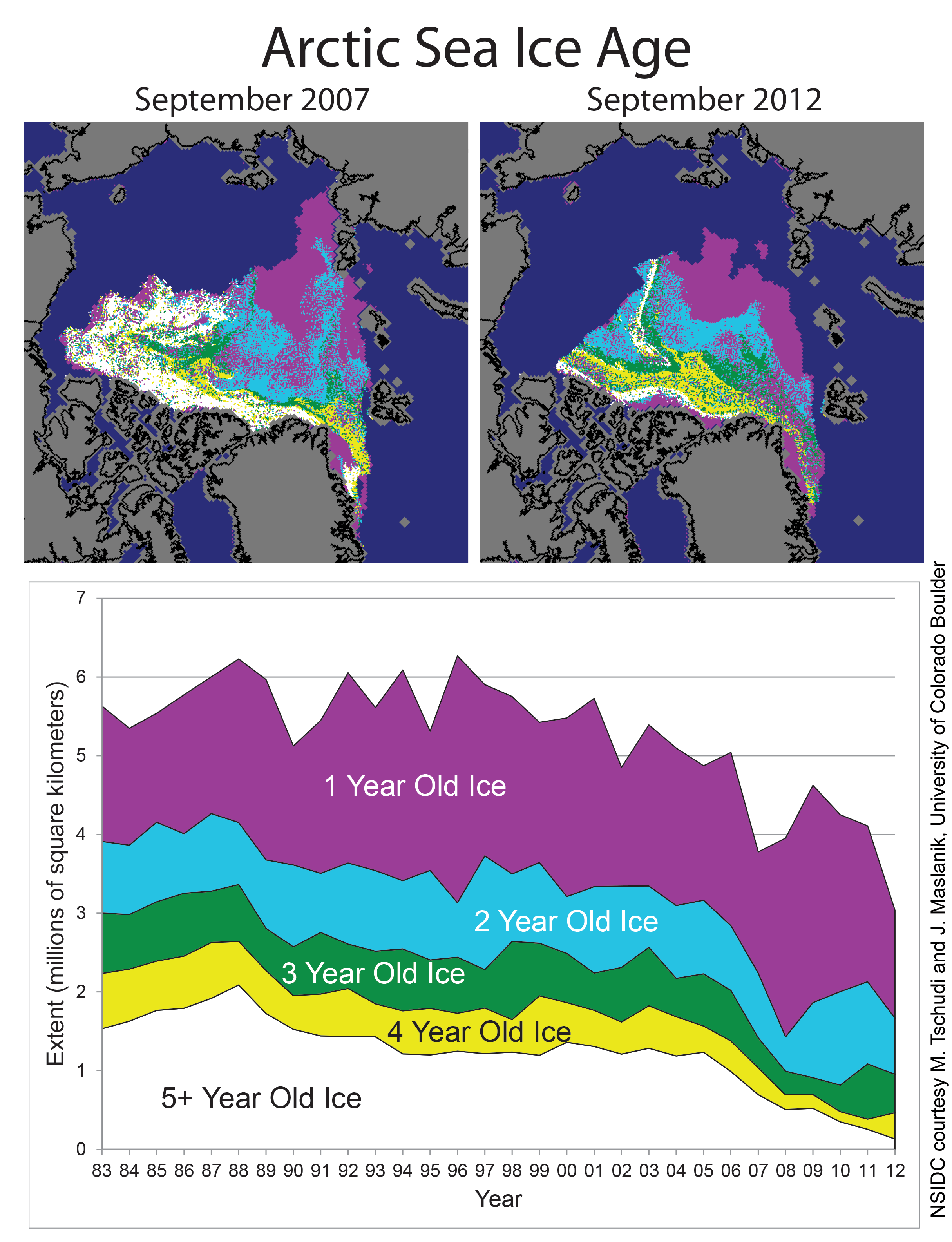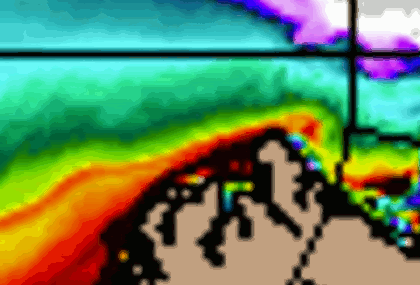One of the big predictions for forthcoming years is the collapse of the Arctic ice cap which may happen as soon as in just a few years. This graph makes it quite clear what will happen:
In the arctic much of the ice disappears every year (first year ice), but some remains (multiyear ice). The resilience of Arctic sea ice depends upon multi-year ice, because it's thicker. Most of the multiyear ice was lost in 2007 and has progressively depleted since then.
As you can see, most of the remaining multi-year ice (about 20% of ice >=4 years) clings to the North Coast of Greenland and islands North of Canada and the thinking is that any ice that clings on beyond 2016 or so will be there. This might not happen. Here's why. There's regular arctic ice being churned out from the Fram Strait, the sea between Greenland and Svalbard thanks to Arctic ocean currents that head up North round from the Atlantic (the same currents that give the UK warm weather). You can see it here:
It's thought by some Arctic observers that the multi-year ice is held in place at the top of Greenland by what's called the Wedge. This may get swept out through the Fram strait in just a couple of days. It'd be the big Wedgie for the Arctic and would have serious consequences for the remaining multi-year ice and whether the Arctic sea ice would in fact trend to around 1MKm3 or nothing at all. Here's a model of the process:
The reason why it can get swept out now, is because the ice is so thin elsewhere in the Arctic, on average, it's just over 1metre thick. Since we know that with thinner ice sea currents have more opportunity to influence Arctic sea ice and in recent weeks observers have noticed a number of cracks appearing in the Arctic sea ice, early than they would be expected (large cracks do occur in the ice, just not normally this early, here):
(It's a false-color image so you can see the contrast more easily, Greenland is bottom right, cracks are shown white against orange).
Of course, it might not actually happen - I'll post a comment in a few days if it does!




